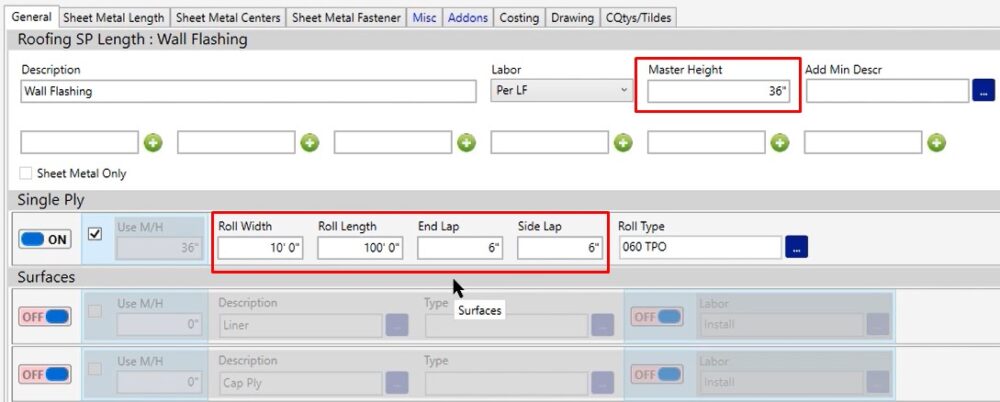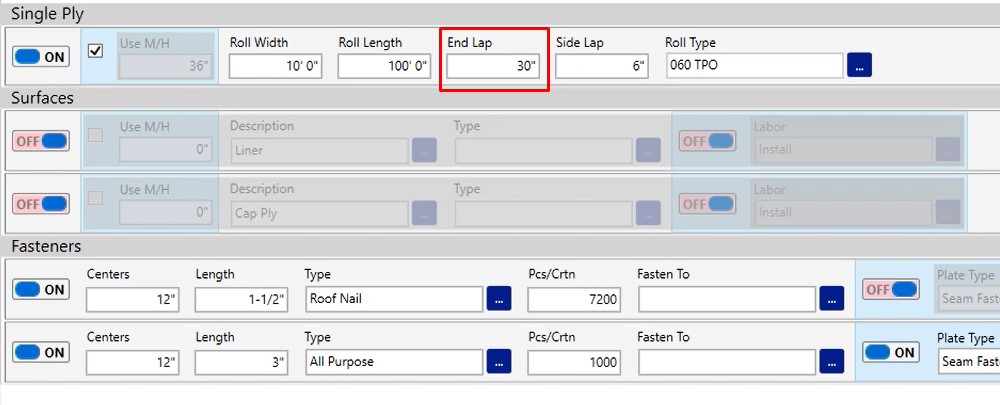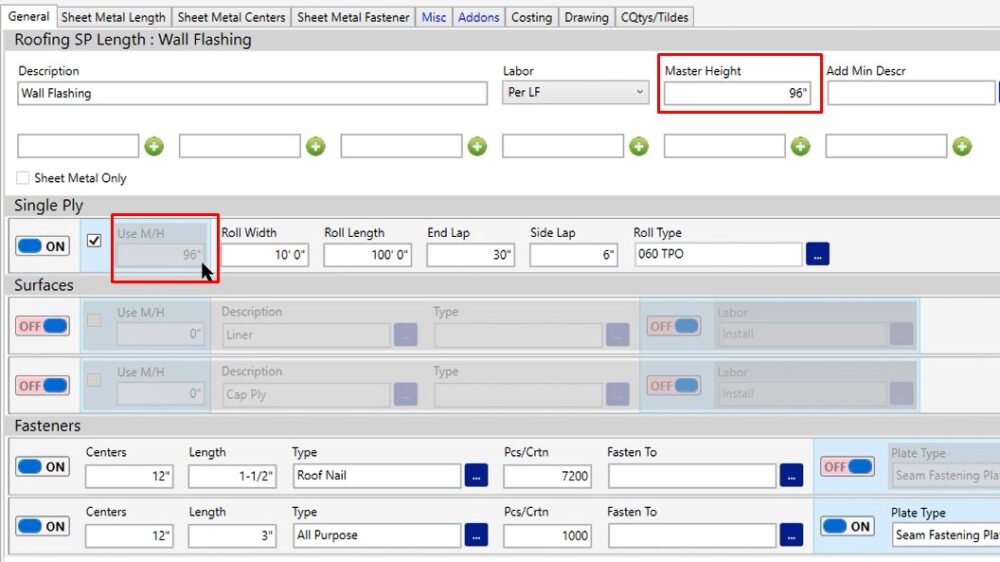 Estimating Edge’s team of experienced construction professionals and software engineers have developed the industry’s smartest takeoff and estimating software solutions for competitive estimates.
Estimating Edge’s team of experienced construction professionals and software engineers have developed the industry’s smartest takeoff and estimating software solutions for competitive estimates.
Don’t just estimate faster. Estimate better.®
- /
- /
- /
- /
How to Adjust the Wall Flashing End Lap
This video covers the end lap calculation and wall flashing condition in v12.
There are two ways to set this up. You have one way that’s going to calculate a vertical seam every 100 lineal feet. And you have another way that’s going to manually change the formula to give you more membrane, as if you were calculating a vertical seam however many feet. That’s going to be dependent upon the formula you use.
Calculating a Vertical Seam Every 100 Feet
The current view of the wall flashing condition is set up for calculating a vertical seam every 100 feet.
In this case, we have a three foot tall membrane calculation where we have an end lap every 100 feet, that is six inches wide. And you have an additional six inches here for your sideline. So in reality, we’re calculating 42 inches of membrane in total the 36 plus the six inch for your sideline.
This is meant for those smaller walls that you’re going to be covering where your team is going to be able to manage the weight and everything else that is applied to that.

Calculating a Vertical Seam Using a Formula
If you want to figure out what that formula is, we give it to you in the notes tab. Click on notes tab and scroll down to the second paragraph.

The second paragraph reads:
The Edge lays the field sheet horizontally resulting in a vertical lap every hundred feet. On an average, we’re suggesting that there’s a vertical lap that happens every 20 feet. Multiply the size of the lap by the number of vertical seams in 100 lineal foot sheet. In this case, a hundred feet divided by 20 feet would give you five and you would take six inches times five to give you an end lap of 30 inches.
If we wanted to calculate having a 20 foot wide sheet that is 96 inches (8′ feet tall), we would change our end lap to 30 inches. This way we can calculate the material correctly and we’re not going to end up short on our project because we didn’t calculate those seams that you’re going to have every 20 feet.

It may be a very small amount of material, but this is allowing you to get a more precise calculation for the membrane that you’re going to be using on those taller walls.
In this example, I would change my master height so it’s reflected correctly, and it will be calculating the total membrane that I’m going to need.

If you have any additional questions or you’re working on this on your own and you start running into some issues, please feel free to give us a call on the tech line. We’d be happy to assist you in any way we can.

